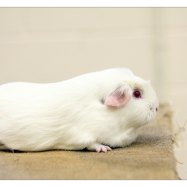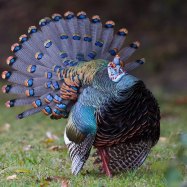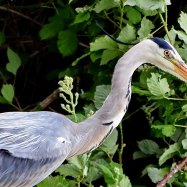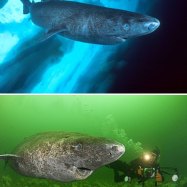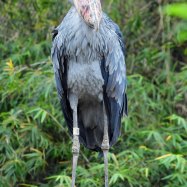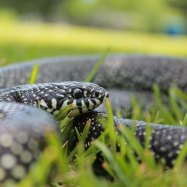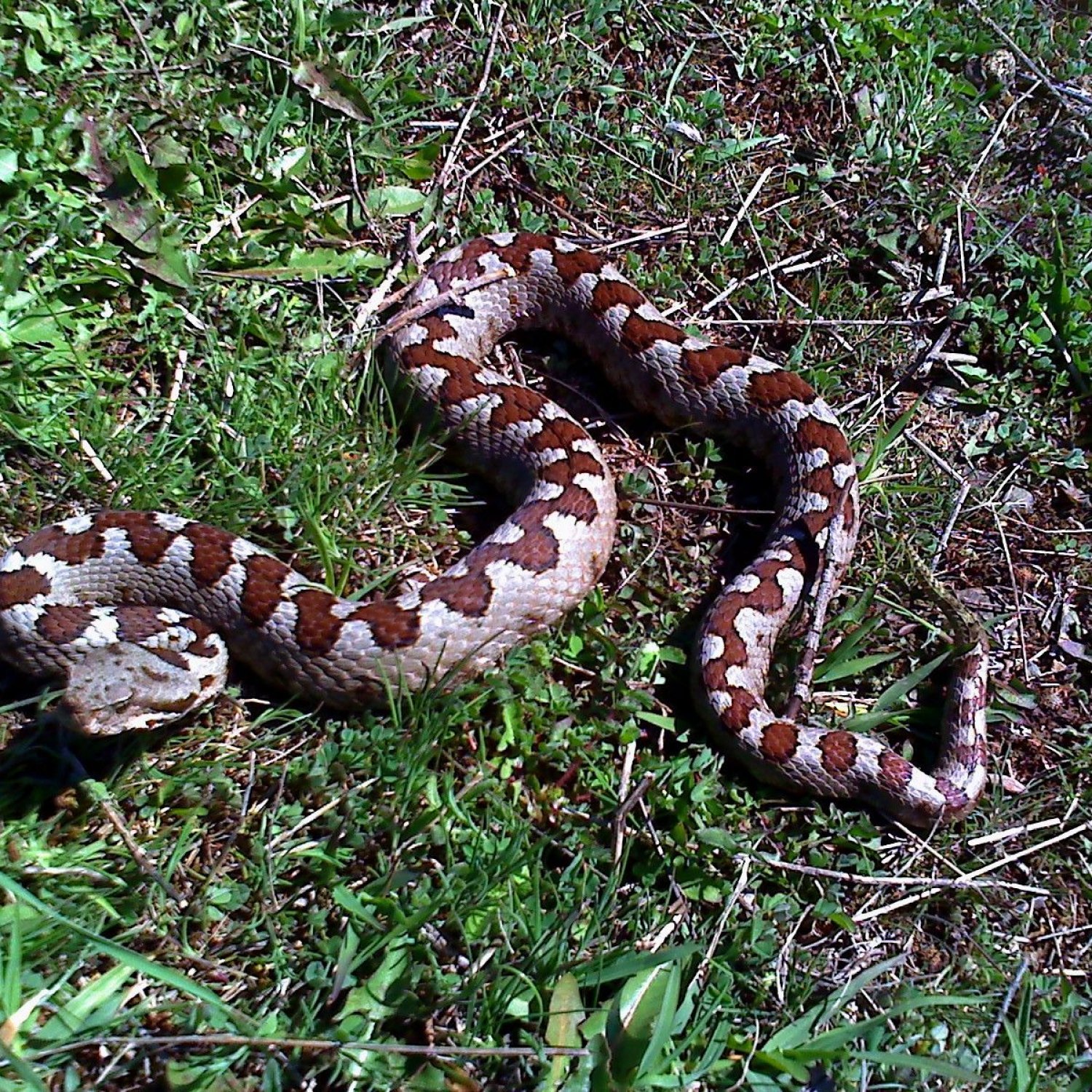
Nose Horned Viper
Up to 1 meter (3.3 feet)
The Nose Horned Viper, also known as the N Viper, is a venomous snake found in the Balkan Peninsula. Its slender body and triangular head make it easily identifiable. At just 1 meter in length, it is small but still dangerous. These vipers are a member of the Viperidae family and can be found in various habitats. Stay safe and avoid this snake if you ever come across it!
Animal Details Summary:
Common Name: Nose Horned Viper
Kingdom: Animalia
Habitat: Rocky areas, dry scrublands, forests
The Enigmatic Nose Horned Viper: A Marvel of Evolution
In the rocky terrain of southeastern Europe, an elusive and intriguing creature is known to roam – the Nose Horned Viper, scientifically known as Vipera ammodytes. This venomous snake, also known as the Sand Viper, is a true testament to the wonders of evolution and adaptation.Despite its intimidating name, the Nose Horned Viper is actually a rather small snake, measuring up to 1 meter (3.3 feet) in length Nose Horned Viper. However, don't let its size fool you – this viper is a fierce predator, with a venomous bite that can be fatal to its prey.
But beyond its impressive hunting abilities, the Nose Horned Viper has many other fascinating features that make it a truly special animal. In this article, we will delve deeper into the world of this enigmatic reptile, from its physical characteristics to its behavior and habitat.
Morphology and Physical Characteristics
The Nose Horned Viper's scientific name, Vipera ammodytes, comes from the Latin words "vipera," meaning viper, and "ammodytes," meaning sand dweller. This name is fitting, as this snake is commonly found in dry, rocky areas such as scrublands and forests.One of the most striking features of this viper is its variable coloration, which can range from shades of gray to brown, with a distinctive zigzag pattern along its back. This pattern, along with its slender body, allows the Nose Horned Viper to blend in seamlessly with its rocky surroundings, making it a master of camouflage.
But perhaps the most unique aspect of this snake is its triangular-shaped head, with a distinctive "nose horn" protruding from its snout. This horn is actually an extension of its nasal bone and is used for digging in the sand, as well as for defense when threatened Nightingale.
Habitat and Distribution
The Nose Horned Viper has a limited distribution, being found only in southeastern Europe, specifically in countries such as Greece, Turkey, Albania, Montenegro, Serbia, Bulgaria, Croatia, Bosnia and Herzegovina, Slovenia, and Hungary. It primarily inhabits the Balkan Peninsula, where it can be found in rocky, arid areas.These snakes are also known to prefer elevations of up to 2000 meters, making them well-adapted to living in mountainous regions. This preference for rocky areas is due to their need for rocky crevices and holes to hide in, as well as their diet consisting mostly of small rodents, lizards, and other small creatures that can be found in these habitats.
Diet and Feeding Behavior
As with most snakes, the Nose Horned Viper is a carnivore and uses its venom to immobilize and kill its prey. This viper is known for its relatively strong venom, which is primarily neurotoxic, meaning it affects the nervous system of its prey.To hunt, the Nose Horned Viper uses a sit-and-wait strategy, where it lies in wait for unsuspecting prey to pass by. When prey is within striking distance, the viper uses its highly sensitive heat-sensing pit organs to locate its prey before striking with lightning speed.
After striking and injecting its venom, the viper uses its specialized jaws and flexible body to engulf and swallow its prey whole. This unique feeding method allows the Nose Horned Viper to consume prey much larger than its own head, making it an efficient and successful predator.
Reproduction and Behavior
The Nose Horned Viper typically mates in early spring, with females laying their eggs in late summer. These eggs are then incubated for around 3-4 months before hatching.Interestingly, the sex of the hatchlings is determined by temperature, with warmer temperatures producing more females and cooler temperatures producing more males. This phenomenon, known as temperature-dependent sex determination, is also found in other reptile species.
In terms of behavior, the Nose Horned Viper is predominantly solitary and only comes together during the breeding season. When not hunting or mating, these snakes are usually found hiding in rocky crevices or holes, using their excellent camouflage to blend in and remain undetected.
Conservation Status and Threats
The Nose Horned Viper is currently listed as a species of "Least Concern" by the International Union for Conservation of Nature (IUCN). However, like many other reptile species, they do face several threats, primarily from human activities.One of the biggest threats to the Nose Horned Viper is habitat destruction and fragmentation due to urbanization and land-use change. This not only reduces the available habitat for the vipers but also makes them more vulnerable to accidental human encounters, often leading to their death.
Additionally, the illegal pet trade and persecution by humans also pose a threat to this species. Due to its venomous nature, the Nose Horned Viper is often killed on sight, even though it plays an important role in maintaining balanced ecosystems.
The Nose Horned Viper and Humans
As mentioned earlier, the Nose Horned Viper has a fearsome reputation due to its venomous nature. However, it is important to note that it only uses its venom as a means of defense and to hunt for food. These snakes are not aggressive and will only strike if they feel threatened.Furthermore, the Nose Horned Viper plays an important role in its ecosystem as a predator, helping to control populations of small rodents and other creatures. Without these vipers, there could potentially be an increase in prey species, leading to imbalances in the ecosystem.
Thus, it is crucial for humans to appreciate and respect the role of the Nose Horned Viper in its environment and work towards conserving and protecting this remarkable species.
The Evolutionary Wonder of the Nose Horned Viper
In conclusion, the Nose Horned Viper is a marvel of evolution, perfectly adapted to its rocky habitats and functioning as an integral part of its ecosystem. From its unique physical characteristics to its specialized hunting methods, this snake is a true testament to the beauty and diversity of the animal kingdom.By understanding and appreciating these creatures, we can work towards their conservation and coexist peacefully with them, rather than fearing and persecuting them. After all, the Nose Horned Viper and other animals like it are what make our world a wondrous and fascinating place.

Nose Horned Viper
Animal Details Nose Horned Viper - Scientific Name: Vipera ammodytes
- Category: Animals N
- Scientific Name: Vipera ammodytes
- Common Name: Nose Horned Viper
- Kingdom: Animalia
- Phylum: Chordata
- Class: Reptilia
- Order: Squamata
- Family: Viperidae
- Habitat: Rocky areas, dry scrublands, forests
- Feeding Method: Carnivorous
- Geographical Distribution: Southeastern Europe
- Country of Origin: Greece, Turkey, Albania, Montenegro, Serbia, Bulgaria, Croatia, Bosnia and Herzegovina, Slovenia, Hungary
- Location: Balkan Peninsula
- Animal Coloration: Variable, usually gray or brown with a zigzag pattern along the back
- Body Shape: Slender with a triangular-shaped head
- Length: Up to 1 meter (3.3 feet)
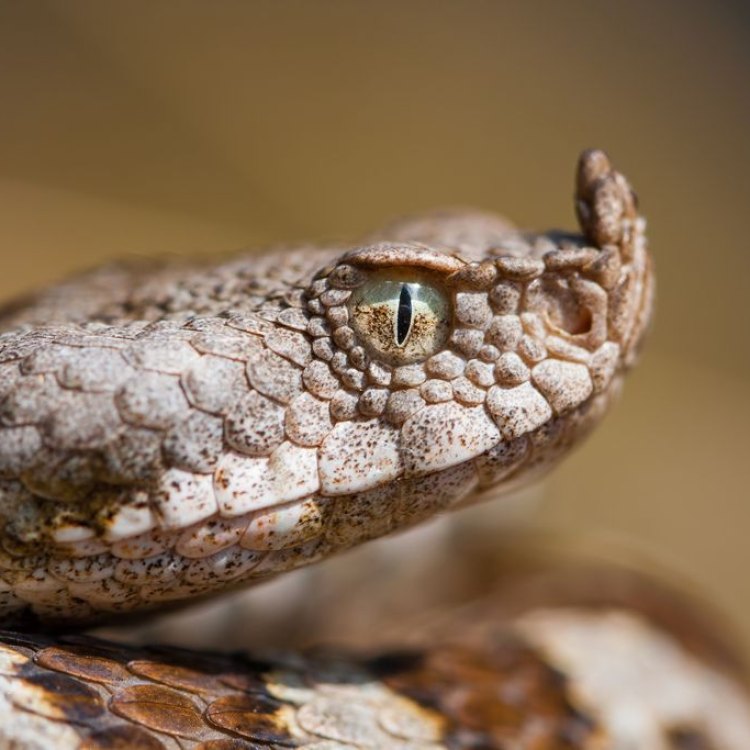
Nose Horned Viper
- Adult Size: Medium-sized
- Average Lifespan: 10-15 years
- Reproduction: Sexual
- Reproductive Behavior: Males compete for females by engaging in combat
- Sound or Call: Hissing sound
- Migration Pattern: No specific migration pattern
- Social Groups: Solitary
- Behavior: Nocturnal and crepuscular
- Threats: Habitat loss, fragmentation, and degradation; illegal collection for the pet trade
- Conservation Status: Least Concern
- Impact on Ecosystem: Acts as a predator and helps control populations of small mammals
- Human Use: Popular species in the pet trade
- Distinctive Features: Horn-like scales on the nose, venomous fangs
- Interesting Facts: The Nose Horned Viper is one of the most venomous snakes in Europe, and its venom can be fatal to humans if not treated.
- Predator: Birds, mammals, and other snakes
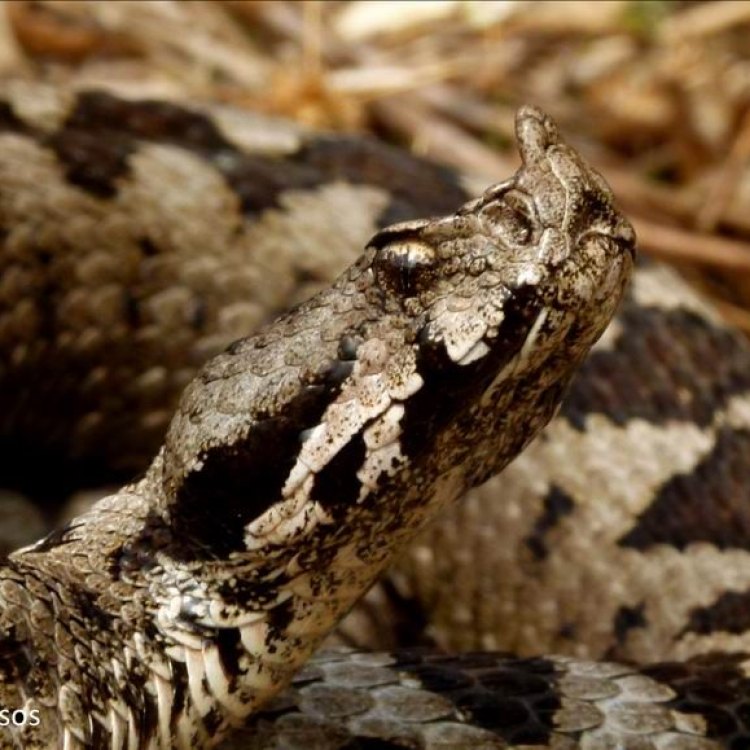
Vipera ammodytes
The Deadly Beauty of the Nose Horned Viper: Europe's Venomous Predator
Imagine walking through the rocky hills of southern Europe and suddenly coming face to face with a mesmerizing creature – a snake with a distinctive horn-like scale on its nose. This is the nose horned viper, one of the most venomous and fascinating snakes found in Europe. The name itself is enough to evoke a sense of intrigue and fear, but there is more to this snake than just its unique physical feature.Found in countries like Spain, Portugal, and France, the nose horned viper, also known as the Rhinoceros Viper, is a medium-sized venomous snake that belongs to the Viperidae family PeaceOfAnimals.Com. Its scientific name, Vipera ammodytes, comes from the Greek words 'vipera' meaning viper and 'ammodytes' meaning 'along the sand.' This reflects its preference for sandy and rocky habitats.
Let's delve deeper into the world of this amazing snake and discover its unique features, behavior, and role in the ecosystem.
Average Lifespan and Size
The nose horned viper has an average lifespan of 10-15 years in the wild, although they have been known to live up to 20 years in captivity. They reach sexual maturity at around 3 to 4 years of age, and females can reproduce every 2 to 3 years. These snakes are medium-sized, with an average length of 65 to 85 cm. However, there have been reports of some individuals reaching up to 110 cm in length.Reproduction and Reproductive Behavior
Like most snakes, the nose horned viper is a sexual species, with males competing for females during the breeding season. What sets them apart is their unique reproductive behavior Nurse Shark. Male vipers engage in ritualistic 'combat' to win the opportunity to mate with a female. This involves intertwining their bodies and pushing against each other, trying to gain dominance. The winner then gets to mate with the female, and the loser has to retreat.Sounds and Migration Pattern
The sound or call of the nose horned viper is a hissing sound, which they produce by quickly exhaling air through their nostrils. This is a defense mechanism used to intimidate predators or other snakes.When it comes to migration, these vipers do not have a specific migration pattern. In fact, they are known to be quite sedentary and prefer to stay in a particular territory or home range. This makes them excellent at adapting to their surroundings, as long as their habitat remains suitable.
Social Groups and Behavior
The nose horned viper is a solitary species, meaning they prefer to live and hunt alone. They are most active at night and during dawn and dusk, which makes them nocturnal and crepuscular animals. They can be found basking in the sun during the day, hiding under rocks or in crevices.These vipers are ambush predators, which means they wait for their prey to come to them. They have a unique hunting behavior where they remain still and wait for their prey to get close enough to strike. Their diet consists of small mammals, birds, and other snakes.
Threats and Conservation Status
Like many other species, the nose horned viper faces multiple threats, including habitat loss, fragmentation, and degradation. Human activities like deforestation and urbanization have significantly reduced their habitat, leaving them with limited areas to thrive.Another major threat to these vipers is illegal collection for the pet trade. Due to their unique physical features and highly potent venom, they are a popular species in the exotic pet trade. This has led to a decline in their population in the wild.
However, despite these threats, the nose horned viper is currently listed as Least Concern on the IUCN Red List. In Mediterranean countries, they are protected by law, and measures have been taken to conserve their habitats. But more efforts are needed to ensure their survival and prevent their population from declining further.
Impact on Ecosystem
The nose horned viper may be a feared predator, but it plays a vital role in maintaining the balance of the ecosystem. Their diet mainly consists of small mammals, which helps control their population, preventing overgrazing and damage to vegetation. This, in turn, affects the population of other species that depend on these small mammals for food.Human Use
As mentioned earlier, the nose horned viper is a popular species in the pet trade. However, due to their venomous nature, they require experience and special care, making them unsuitable as pets for most people. In some regions, their venom is also used for medicinal purposes, although this practice is not supported by scientific evidence.Distinctive Features and Interesting Facts
Of course, the most striking feature of the nose horned viper is its horn-like scale on its nose, which gives it a unique and intimidating appearance. The scale is actually a modified nasal scale and is used to sense heat, aiding in hunting.But there's more to this snake than just its appearance. As one of the most venomous snakes in Europe, its venom is highly toxic and can be fatal to humans if not treated. It is estimated that 5% of untreated bites can be fatal.
On a less scary note, the nose horned viper is also known as a symbol of health and fertility in some cultures. In ancient Greece, it was believed that wearing an amulet made from its shed skin would bring good health and luck to the wearer.
Predators
Although the nose horned viper may seem invincible with its venomous fangs, it does have predators in the wild. Birds of prey, such as the golden eagle, and mammalian predators, such as the mongoose and foxes, are known to prey on these vipers. Other snakes, particularly larger species like the Montpellier snake, also pose a threat.In Conclusion
The nose horned viper is truly a fascinating and unique species, with its distinctive features, behavior, and role in the ecosystem. Despite facing threats like habitat loss and illegal trade, efforts are being made to conserve and protect this beautiful and deadly predator.If you ever come across a nose horned viper in the wild, remember to admire it from a safe distance and let it continue playing its crucial role in maintaining the balance of the ecosystem. And let's all do our part in preserving its natural habitat to ensure its survival for generations to come.
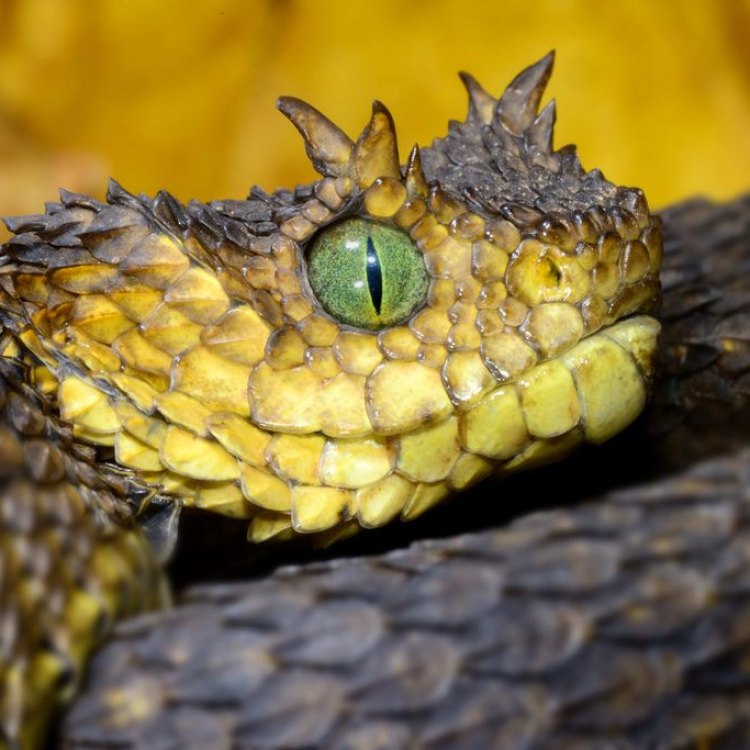
The Enigmatic Nose Horned Viper: A Marvel of Evolution
Disclaimer: The content provided is for informational purposes only. We cannot guarantee the accuracy of the information on this page 100%. All information provided here may change without prior notice.

